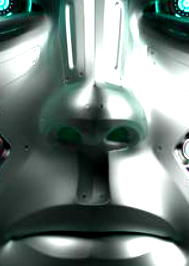'E-nose' trained on booze
 A new, robotic ‘e-nose’ can sniff out important differences between types of whiskey.
A new, robotic ‘e-nose’ can sniff out important differences between types of whiskey.
While the rare whisky enthusiast might be able to distinguish the good stuff from run-of-the-mill by smell alone, most tipplers simply rely on the label.
However, with some high-end brands fetching five or six figures per bottle, whisky is a favourite target for fraud.
To combat this, researchers at the University of Technology Sydney (UTS) have developed an electronic nose (e-nose) that can distinguish between different brands, origins, and styles by “sniffing” the liquor.
“Up until now, detecting the differences between whiskies has required either a trained whisky connoisseur, who might still get it wrong, or complex and time-consuming chemical analysis by scientists in a lab,” says project leader Associate Professor Steven Su.
“So to have a rapid, easy to use, real-time assessment of whisky to identify the quality, and uncover any adulteration or fraud, could be very beneficial for both high-end wholesalers and purchasers,” he said.
The team has used a new e-nose prototype (called NOS.E), developed at UTS, to identify the differences between six whiskies by their brand names, regions, and styles in less than four minutes.
NOS.E is designed to mimic the human olfactory system, using eight gas sensors to detect odours in a vial of whisky. The sensor array generates the unique signal matrix according to the different odour molecules it comes into contact with.
It then sends the data to a computer for analysis, with a machine learning algorithm trained to recognise whisky characteristics.
The experiment used samples of three blended malts and three single malt whiskeys, including Johnnie Walker red and black label whiskey, Ardberg, Chivas Regal and a Macallan's 12-year-old whisky.
The e-nose reached 100 per cent accuracy for detecting the region, 96.15 per cent accuracy for brand name and 92.31 per cent accuracy for style.
The e-nose technology has also been used to detect illegal animal parts sold on the black market, and has potential for health applications and disease detection.
More details are accessible here.








 Print
Print